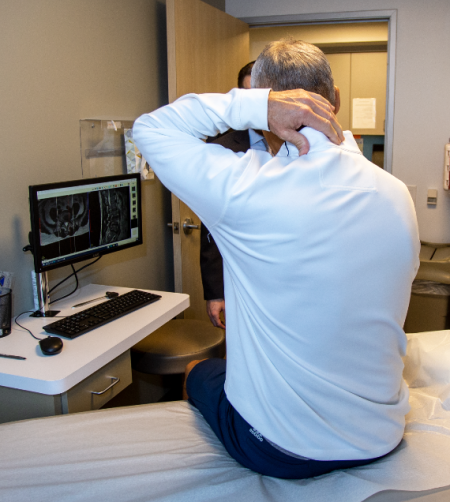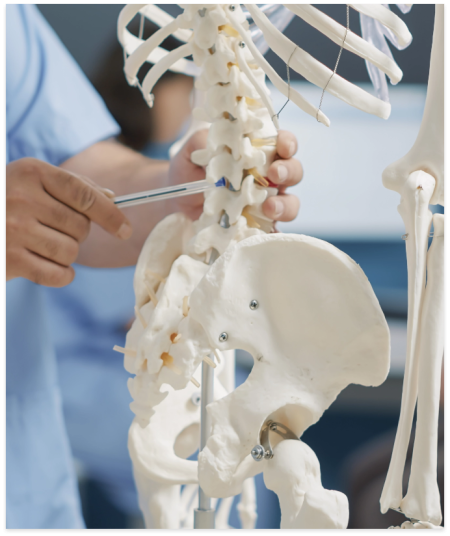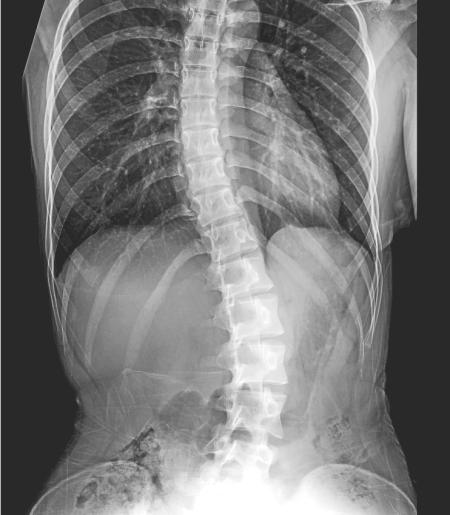
There are many other types of treatments available for less common conditions. Something as simple as proper walking requires the coordination of many systems within the body, including the ability to have balance, sensory function, reflexes, and motor function. Any one of these elements can be impaired, but there are treatments available to improve each component. Your best option may be surgical or non-surgical. Our goal is to provide the best option for optimal rehabilitation and healing.
Spinal oncology involves the surgical removal of part of/the majority of the mass of a tumor – or as much or a tumor as possible – through tumor debulking. Tumor debulking may increase the chance that chemotherapy or radiation therapy will kill all tumor cells. It may also be done to relieve symptoms or to help the patient live longer. There are also a number of reasons why a surgeon may remove part of a tumor and not fully resect it, some of which may relate to whether or not a tumor is benign.



Neuromodulation is a chronic pain management therapy, whereby a device is used to send low-voltage electrical impulses to the spine, in order to better control pain. During neuromodulation, nervous tissue function is measured and nerve activity is directly altered by sending electrical stimulation, a “stimulus”, to a targeted area. This technology acts directly upon the nerves and normalizes (or “modulates”) nervous tissue function.
Kyphoplasty is a procedure that treats painful compression fractures or breaks in the vertebrae of the spine. These breaks cause the spine to shorten and curve forward and in a compression fracture, all or part of the vertebral bone can collapse. Kyphoplasty involves injections directly into the vertebrae in order to restore a damaged vertebrae’s height and to relieve pain.


Kyphoplasty is a procedure that treats painful compression fractures or breaks in the vertebrae of the spine. These breaks cause the spine to shorten and curve forward and in a compression fracture, all or part of the spine bone can collapse. Kyphoplasty involves injections directly into the vertebrae in order to restore a damaged vertebrae’s height. These injections also relieve pain.
A Medial Branch Block is a pain-blocking steroid injection. The injection temporarily blocks the pain signals emanating from the medial nerves, which run through the facet joints in the spine. Typically, it takes 2-3 days for the injection to take effect, and the relief will last approximately 2 weeks.

Injections are a pain management alternative to surgical treatment. There are a wide variety of neck and back injections available for both acute and chronic pain. Some injections last for several months and also assist patients with completing physical therapy, exercise, and rehabilitation programs. We partner closely with many physicians who specialize in injections. Together, our team will find the right injection strategy for you.



Nerve-block injections, such as lidocaine, provide numbness and pain relief. There are also epidural, meaning “around the spinal cord”, steroid injections available, or corticosteroid shots.
A Medial Branch Block is a pain-blocking steroid injection. The injection temporarily blocks the pain signals emanating from the medial nerves, which run through the facet joints in the spine. Typically, it takes 2-3 days for the injection to take effect, and the relief will last up to approximately 2 weeks.
Radiofrequency ablation is a type of procedure in which heat is used to destroy tissue, or shrink the size of a growth in the body. In regards to pain management, radiofrequency ablation uses radio waves that are sent through a special needle that will target a nerve tissue area. By doing this, the pain signals in the area are prevented from being sent back to the brain, and therefore provide relief.
Epidural steroid injections are a form of pain management for back pain. Corticosteroids and a local anesthetic are injected into the epidural space around the spinal cord to provide the patient with some relief. These injections can improve pain related to spinal stenosis, spinal disc herniation, or both.
A trigger point injection is meant to help soothe myofascial pain, particularly in the neck, shoulder, arms, legs and lower back. Trigger point injections can be used to treat multiple muscle groups, which can be helpful if a back strain is muscle related. Typically, the effects of the injections are felt within 24-72 hours and the relief can last up to a month.
Lorem ipsum dolor sit amet, consectetur adipiscing elit, sed do eiusmod tempor incididunt ut labore et dolore magna aliqua. Ut enim ad minim veniam, quis nostrud exercitation ullamco laboris nisi ut aliquip ex ea commodo consequat. Duis aute irure dolor in reprehenderit in voluptate velit esse cillum dolore eu fugiat nulla pariatur. Excepteur sint occaecat cupidatat non proident, sunt in culpaest laborum.
Lorem ipsum dolor sit amet, consectetur adipiscing elit, sed do eiusmod tempor incididunt ut labore et dolore magna aliqua. Ut enim ad minim veniam, quis nostrud exercitation ullamco laboris nisi ut aliquip ex ea commodo consequat. Duis aute irure dolor in reprehenderit in voluptate velit esse cillum dolore eu fugiat nulla pariatur.


Lorem ipsum dolor sit amet, consectetur adipiscing elit, sed do eiusmod tempor incididunt ut labore et dolore magna aliqua. Ut enim ad minim veniam, quis nostrud exercitation ullamco laboris nisi ut aliquip ex ea commodo consequat. Duis aute irure dolor in reprehenderit in voluptate velit esse cillum dolore eu fugiat nulla pariatur. Excepteur sint occaecat cupidatat non proident, sunt in culpaest laborum.
Lorem ipsum dolor sit amet, consectetur adipiscing elit, sed do eiusmod tempor incididunt ut labore et dolore magna aliqua. Ut enim ad minim veniam, quis nostrud exercitation ullamco laboris nisi ut aliquip ex ea commodo consequat. Duis aute irure dolor in reprehenderit in voluptate velit esse cillum dolore eu fugiat nulla pariatur.





